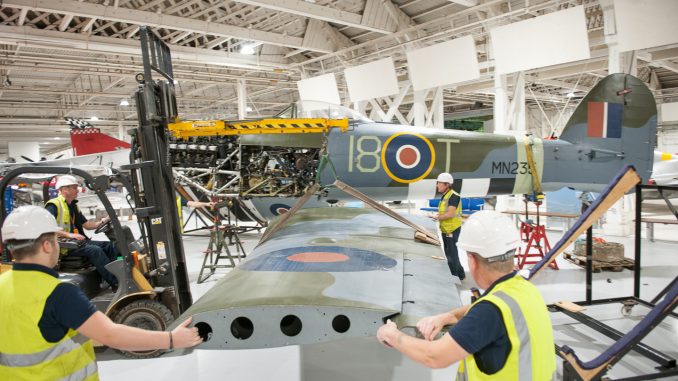
The RAF Museum announced a couple of days ago that their unique Hawker Typhoon Mk.Ib MN235 is now fully re-assembled and back on formal display at their London campus, the former RAF Hendon. The aircraft had been on loan for most of the past four years at the Canada Aviation & Space Museum. Although it arrived back in the UK in mid-April, it has taken a rather circuitous route back home to Hendon, where it arrived in a disassembled state in mid-October. While the fuselage has been on display in the main hall since it arrived, it wasn’t until the end of November that a crew put her back together again. MN235 is the sole remaining original and complete Typhoon left in existence, and even that is due solely to the airframe having been transferred to the USA during WWII for testing. Every other example was either lost in a crash or scrapped by the late 1940s, although there are a number of partial airframes still out there, with at least two of these forming the basis for currently active airworthy restorations. MN235 never saw combat during WWII, but it still had an interesting service life. We have reproduced the RAF Museum’s aircraft history card here for our readers to learn these details. There are also remarks at its closing regarding the incomplete Typhoons still in existence.
Ordered by Air Ministry from Hawker Aircraft Ltd, contract no.943/SAS/C.23 (A). Sub-contracted by Hawker Aircraft Ltd to Gloster Aeroplane Co Ltd, sub-contract no.B.12148/39. Glosters built all but 15 of the 3,317 Typhoons built.
1944: Built by the Gloster Aeroplane Co Ltd at Hucclecote, Gloucester. Fitted with 2,180hp Napier Sabre IIA Engine. Given airframe No.153219. Part of Typhoon batch MN229 – MN269 which formed part of the 5th production batch of 800 aircraft, delivered Dec 43 -Jun 44.
8 Feb 44: First flight at Hucclecote Aerodrome, Glos – a 40 minute flight flown by Squadron Leader Allan H Smith DFC, serving as a test pilot for the Gloster aircraft company on rest after completing his first operational tour with No 486 (NZ) Squadron. Squadron Leader Smith later commented that it must have been a good aircraft because he signed it ‘off test’ for delivery to the RAF after 40 minutes flying without any faults that would require another test flight. See logbook copy DoRIS ref. MF10029/12.
16 Feb 44: Off contract and allocated to 51 MU Lichfield, Staffs for storage.
Mar 44: Allocated to USA for flight evaluation, in response to a USAAF requirement to investigate the Typhoons’ potential as a fighter-bomber and to increase its fuel capacity.
12 Mar 44: To 47 MU RAF Sealand, Cheshire for packing.
24 Mar 44: Shipped to New York on the `SS American Manufacturer’.
16 Apr 44: Arrived in New York. Last entry on movement card.
6 May 44: To Wright Field, Ohio
After arrival in the United States the Typhoon was intended for fighter comparison and evaluation trials by the USAAF. On an unknown date it was issued with the Flight Test evaluation serial number T2-491/FE-491, though it is thought that it did not fly with this number applied. The `FE’ stood for `Foreign Experimental’. The aircraft was evaluated at Wright-Patterson Air Force Base, Dayton, Ohio. Due to changing requirements the Typhoon did not undertake the test programme originally envisaged and following a minor accident after only nine hours flying was put into store.
Examination of the aircraft as part of the assessment of its condition after 21 years at Hendon revealed that on the starboard side of the cockpit there is a small wooden container marked `Airplane Defect Reports’.
The aircraft also carries, on the reverse of a removable panel below the cockpit (port side) a `Data Case’ that has the following pencilled on it: `P38-G-3-LO, Aircraft 42-12791′. If this is indeed from a P-38 Lightning then these would seem to be two small modifications made by the Americans during their brief evaluation of the aircraft.
Jul 44: Noted at Freeman Field, and photographed 6 Jul 44 after assembly. Photo assembled in USA – Aeroplane June 2004 p.82.
24 Jul 46: Again at Freeman Field. Engine prepared for storage. Total flying hours – nine.
03 Jan 49: Allocated to the National Air Museum and eventually placed in crated storage at the reserve collection of the Smithsonian Institute, Washington. Apparently never on public display whilst in USA.
On this date the aircraft passed from USAAF ownership but its location remained unchanged – Chicago Orchard Place Airport, Park Ridge, Illinois, used for storage of museum aircraft since late 1948. It appears to have been dismantled for storage by this date.
Also transferred was a spare Napier engine sent out with the aircraft in 1944 – in 2016 this remained in store, complete and in good condition, with the Smithsonian Institution.
Aug 1953: Letter in Air Pictorial (page 249) from Keith Boyer, who had seen `a Hawker Aircraft’ serialled MN235 – The Typhoon – at O’Hare International Airport, Chicago. Air Pictorial mis-identified the aircraft as a Hurricane, despite the correctly quoted serial number. The aircraft was stored for a future National Air Museum along with some 135 other aircraft.
In the late 1940s, General Henry `Hap’ Arnold, Chief of Staff of the US Army Air Force, collected together sixty WW2 aircraft from all over the world and had them stored in an unused Douglas Aircraft Company factory at Park Ridge, Chicago, Illinois. However the aircraft – presumably including the Typhoon – were evicted when the factory re-opened in1952 with the on-going Korean War. The factory site later became O’Hare International Airport. After a period of external store the aircraft were crated by the time Mr Boyer saw them, and they were moved to the newly acquired storage facility at Silver Hill, Suitland, Maryland by early 1955 from whence the Typhoon was extracted in 1967. This is now the Paul E. Garber facility of the National Air and Space Museum.
Apr 67: RAFM request to Smithsonian for Typhoon to be returned to the UK. Aircraft prepared for shipment.
Jul 67: Presented to RAFM by Smithsonian. Hurricane IIc LF686/5270M given in exchange by RAF 1969.
4 Jan 68: Shipped back to England from Baltimore to Liverpool Docks on S.S. Samaria. Taken by road to 71 MU Bicester for survey of work needed for restoration.
9 Apr 68: Transported by road by 71 MU to 27 MU Shawbury for restoration to display condition by a largely civilian team, restoration beginning 26 April 1968.
Arrived in UK missing one 20mm cannon, spinner, most engine cowlings, starboard aileron, undercarriage parts, radiator/oil cooler unit, side panels below cockpit and various inspection panels.
The missing cannon was replaced from RAFM stocks; the spinner was adapted from a HP Hastings spinner and other parts were made by 27 MU. The aircraft was in generally good condition with only slight corrosion.
Replacement engine cowlings were made from sheet aluminium, and the missing radiator was replaced by a cut-down Bedford lorry unit made to look like the original from the front at least. The incomplete state of the aircraft delayed the restoration team who had hoped to have the aircraft ready for the Royal Review of the RAF at Abingdon in June 1968; the intended display of the aircraft on Horse Guards Parade September 1968 also had to be postponed. See Form 700 issued at 27 MU 19 November 1968 – DB351.
19 Nov 68: Restoration completed and aircraft formerly presented to Dr John Tanner of the RAFM by Wg Cdr D A Gifkins, CO of 27 MU. Aircraft remained in store at Shawbury. Photos: Aircraft Illustrated Feb 69 p.48; Aero Modeller Feb 69 p.63; Royal Air Force News 14 Dec 1968. Colour photos at Shawbury – Aircraft Illustrated Apr 71 p.151 and Wrecks and Relics – The album p.55; Hawker Typhoon Special Mach 1 (Thomas) p.13; Flypast May 2008 p.20.
Feb 1972: Repainted by 27 MU at Shawbury.
By Nov 1972: Moved to Hendon for Museum opening and displayed in Camm Hall area ever since. This area is now known as the `Fighter Hall’.
1994: Centrepiece of `D-Day’ display – some repainting scheduled.
`Invasion’ stripes applied to wings and fuselage. Photos as latterly displayed – Aviation News February 2014 p.78; Flypast May 2014 p.10.
4 Nov 2013: Dismantling underway for move to MBCC RAFM Cosford for attention.
Removal of the cannon fairings revealed traces of the original wartime paint scheme on the wing leading edge – yellow leading edge band, upper surface grey and even clearly delineated black underside stripes – original Typhoon identification stripes to avoid confusion with Fw190.
7 Nov 2013: By road to MBCC at RAFM Cosford. Photos as delivered – Flypast January 2014 p.7 and April 2014 p.32; February 2014 pp. 90-91; Wrecks and Relics 24th Edition (2014). Repainted in representative markings of a Typhoon of No 440 Squadron RCAF, codes I8-T; fuselage repainted by 10 March 2014. Photos of fuselage and wings; Napier Heritage News 83 Spring 2014-cover; Flightpath Vol 25 No 4 p.27, 2014.
Nov 2013: Excavations by the volunteer Freeman Field Recovery team found the complete missing Typhoon Radiator core and at least one engine cowling amongst other buried aircraft parts, plus a complete Typhoon main undercarriage leg, propeller blades and other spares.
Photo of radiator – Britain at War Magazine Jan 2014 p.12.
8 May 2014: Despatched by road to RAF Brize Norton en route to Canada for loan to the Canada Aviation and Space Museum, Rockliffe, Ottawa. Flown out by RCAF C-17, 17 May 2014. Photo being unloaded – Classic Wings Issue 93 p.15.
4 June 2014: Following assembly, towed from conservation hangar to main display hall at Rockcliffe. Formal unveiling on 6 June 2014 – 70th anniversary of D-Day. Photos on display; Flypast August 2014 p.16; Aeroplane August 2014 p.8; Flightpath Vol 26 No 1 (2014) p.6..
12 Apr 2018: Arrived back in UK via Liverpool docks.
18 Apr 2018: Following its return from Canada, to temporary storage at RAF Museum Stafford.
23 July 2018: By road from Stafford – Temporarily on loan to BAE Systems/RAF Coningsby. ‘Rolled Out’ at Coningsby on 27 July. Photos- Aeroplane September 2018 p.8.; Aviation News September 2018 p.22; Britain at War September 2018 p.6. For display in BBMF hangar.
18 Oct 2018: Returned by road from RAF Coningsby to Hendon
26-28 Nov 2018: Re-assembled at Hendon and placed back on public display
Incomplete Typhoon Survivors List:
MN235 is the sole surviving complete Typhoon. However, several cockpit sections survive and form a fluctuating and frequently moved pool of restoration projects that are quite difficult to keep track of:
- Mk.IB sectioned IWM, Duxford. On display in main Superhangar on mezzanine.
- R7708 Mk.1B (Car Door) Peter Smith, Kent BoB Museum Hawkinge (ex 609 Sqn/Pegwell Bay). Identity from recovered parts.
- Phil Earthy, Norwich – formerly held a collection of parts, Mk.1B.Project moved on by 1998.
- Mk.1B Ex the late Mike Cookman, Leeds. Later sold to Brian Barnes, Coventry identified as `JR505′. Photo: Wingspan Aug 95 p.50. Formerly at Midland Air Museum; fwd fuselage frame; currently in store.
- Mk.1B Previously with Barry Field/Museum of D-Day Aviation, Shoreham airport (sold 2003 – with engine-now moved to France) Composite using original Typhoon and Tempest components.
- Roger Marley, Shrewsbury, was constructing a substantial Typhoon IB cockpit/fuselage section ‘JP843/PR-L’ incorporating original cockpit, firewall, front and rear spar, controls and instruments. Photo – Flypast September 2010 p.85. Rear fuselage of Sea Fury FB.II VW589, ex Malta 1989, also held for the project – previously with Peter Smith at Hawkinge. Project acquired for export to Canada, 2015. See www.typhoonlegacy.com. A substantial section of Typhoon port wing, ex Belgium, was identified in the USA in 2016 and acquired for the JP843 restoration project.
- Mk.1B ‘car door’ variant Ex scrapyard forward fuselage with Gloucestershire Aviation Collection (Jet Age Museum) ex Brockworth and Twyford, Recovered from Flowers yard, Chippenham by Retro Track & Air UK 1998. See http://forum.keypublishing.com/showthread.php?141512-J-A-M-Car-door-Typhoon-rebuild BAPC .363.
- Mk.1B Cockpit – Previously with Air Defence Collection, Salisbury-at Boscombe Down 2004; to Aero Venture, Doncaster, by 2008, along with another Typhoon I cockpit section, ex Staverton – both unidentified, and on loan from Naylan Moore’s Classic Aircraft Collection.
- EJ922 Mk.1B. Previously with Kent BoB Museum, Hawkinge Formerly with Peter Smith (Ex No.3 Squadron, SOC 13/3/47; Brownhills in 1977 and Mike Cookman) To Hawker Typhoon Preservation Group, Uckfield, East Sussex, for rebuild project incorporating a rear fuselage section formerly preserved in Holland, originally at the Luchtvaartmuseum, Twenthe, and latterly at Fort Veldhuis, imported into the UK in 2013 for this Dave Robinson Typhoon 1B rebuild project. This is from No 174 Squadron IB XP-W/RB396, force-landed 1 April 1945. (Photo; Flypast July 2006 p.15, Classic Wings 89 p.54); see www.hawkertyphoon.com for rebuild project
- And possibly a pair of wings in France. Former 609 Squadron.
- Volkel Air Force Base, Netherlands display the engine, propeller and radiator of Typhoon IB RB250 which crashed on 13 April 1945 – photo Flypast September 2013 p.10.


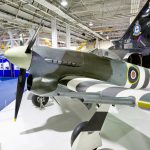
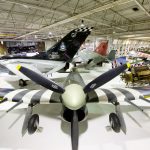
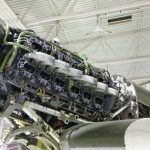
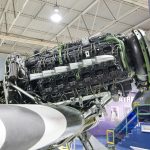
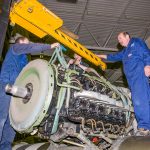
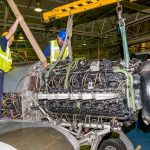
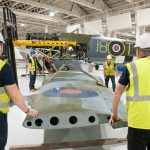
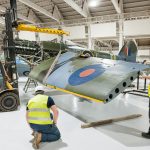
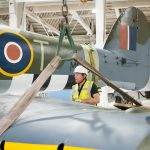
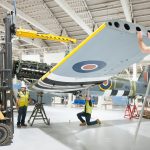
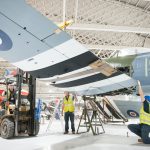
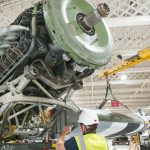
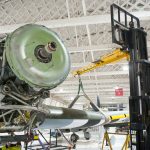
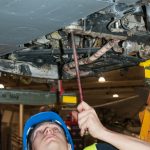
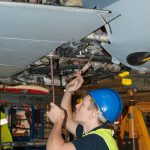
Be the first to comment
Graphic Design, Branding and Aviation Art